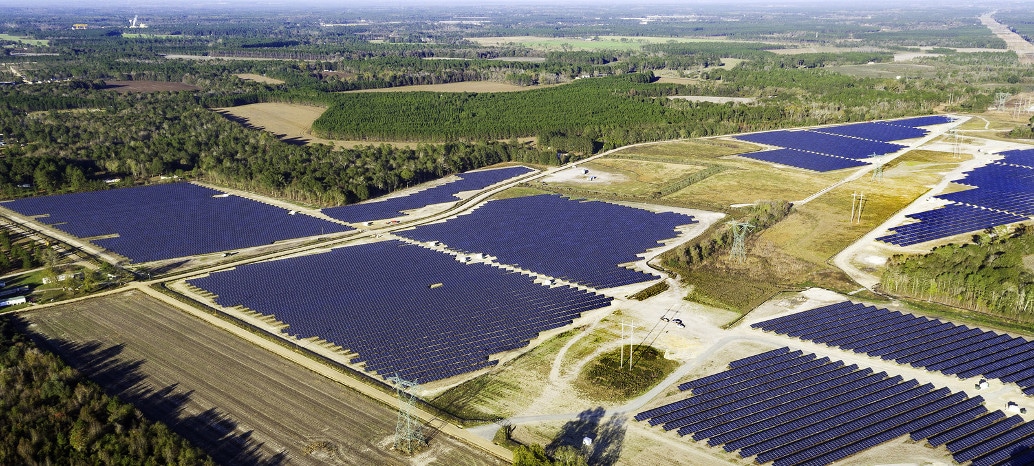Across the Southeast in recent weeks, first it was Duke Energy in North Carolina whose lowball plans for solar were contested by solar advocates, then TVA in Tennessee, and now Georgia Power.
And as in North Carolina, solar advocates have brought their own models to the regulatory proceeding that is reviewing Georgia Power’s plan (docket number 42310).
Evaluating the near-term solar potential in Georgia, expert witness Arne Olson testified for the Georgia Large Scale Solar Association that 4 to 4.5 GW of new solar would save customers money when added to the utility’s current mix of generators. Mr. Olson, a 23-year industry veteran and senior partner of Energy and Environmental Economics, described a sophisticated custom spreadsheet model he developed to conduct his analysis.
And over the next 20 years, Georgia Power would save customers money by adding 13 GW more solar than the utility currently plans, said expert Rachel Wilson in testimony for the Sierra Club. Ms. Wilson, principal associate for Synapse Energy Economics, used the Encompass utility planning model for her analysis.
Georgia Power, using the Strategist model to develop its proposed resource plan, proposes to add only 1 GW of solar over the next 20 years to serve its 2.5 million customer accounts.
The solar association recommended that the utility use a different modeling approach in developing its next resource plan, while the Sierra Club challenged the utility’s continued use of the Strategist model.
The solar association’s near-term 4-4.5 GW target for Georgia solar was consistent, Mr. Olson said, with a study his firm had conducted for Tampa Electric Company. That study used the Plexos model to determine that adding flexible solar generation—operating with “headroom” to permit ramping, and curtailing when needed—“continues to add value … up to the maximum level of solar penetration examined of 28 percent.”
With “must-take” solar contracts that permit no curtailment, that study showed that Tampa Electric would save its customers money by increasing its solar generation to 14% of annual energy, Mr. Olson said. Yet by adding just a “small amount” of solar curtailment, customers would save with solar generation increasing to 18%, he said, and in Georgia Power’s case, that would mean 5 GW of new solar. “Therefore,” he said, “my simplified evaluation of the Georgia Power system yields very similar results to a much more detailed and granular analysis of the TECO [Tampa Electric] system.”
Further making the case for 4-4.5 GW of solar in the near term, Mr. Olson cited “numerous recent announcements” of solar PPA prices below $30/MWh in jurisdictions across the country, and concluded “it is immediately clear that a significant quantity of new solar will come in well below Georgia Power’s stated avoided cost.” (That stated cost was redacted from Mr. Olson’s public testimony, as Georgia Power considers it to be a trade secret.)
Separately, two groups representing Georgia’s distributed solar industry proposed that Georgia Power should procure 400 MW of competitively bid distributed solar by 2022 to benefit ratepayers, versus the utility’s proposal of 50 MW by 2024.
Modern utility planning models are elegant tools that can find the least-cost path to adding low-cost solar, wind and storage to the grid. They are used when a utility prepares an integrated resource plan (IRP), in one of the 33 states that require them. Yet some utilities still use older models, and modeling approaches, designed for the fossil fuel era.
Mr. Olson testified that Georgia Power, in its next IRP, should consider adopting “more sophisticated techniques” for estimating the costs and benefits of integrating higher levels of solar energy into its portfolio. Specifically, he recommended that the utility evaluate utility-scale solar and solar + storage resources using the same planning framework as it uses to evaluate all of its existing and new resources, rather than evaluating large-scale solar “in a downstream avoided cost framework” as it did for its current proposed resource plan.
Ms. Wilson testified that the Strategist model “is no longer well-suited for existing conditions in the electric sector,” citing four limitations of the model. She also concluded that Georgia Power’s plan “unreasonably limits the resource options in its Strategist modeling to exclude renewable generating technologies.”
This content is protected by copyright and may not be reused. If you want to cooperate with us and would like to reuse some of our content, please contact: editors@pv-magazine.com.








By submitting this form you agree to pv magazine using your data for the purposes of publishing your comment.
Your personal data will only be disclosed or otherwise transmitted to third parties for the purposes of spam filtering or if this is necessary for technical maintenance of the website. Any other transfer to third parties will not take place unless this is justified on the basis of applicable data protection regulations or if pv magazine is legally obliged to do so.
You may revoke this consent at any time with effect for the future, in which case your personal data will be deleted immediately. Otherwise, your data will be deleted if pv magazine has processed your request or the purpose of data storage is fulfilled.
Further information on data privacy can be found in our Data Protection Policy.